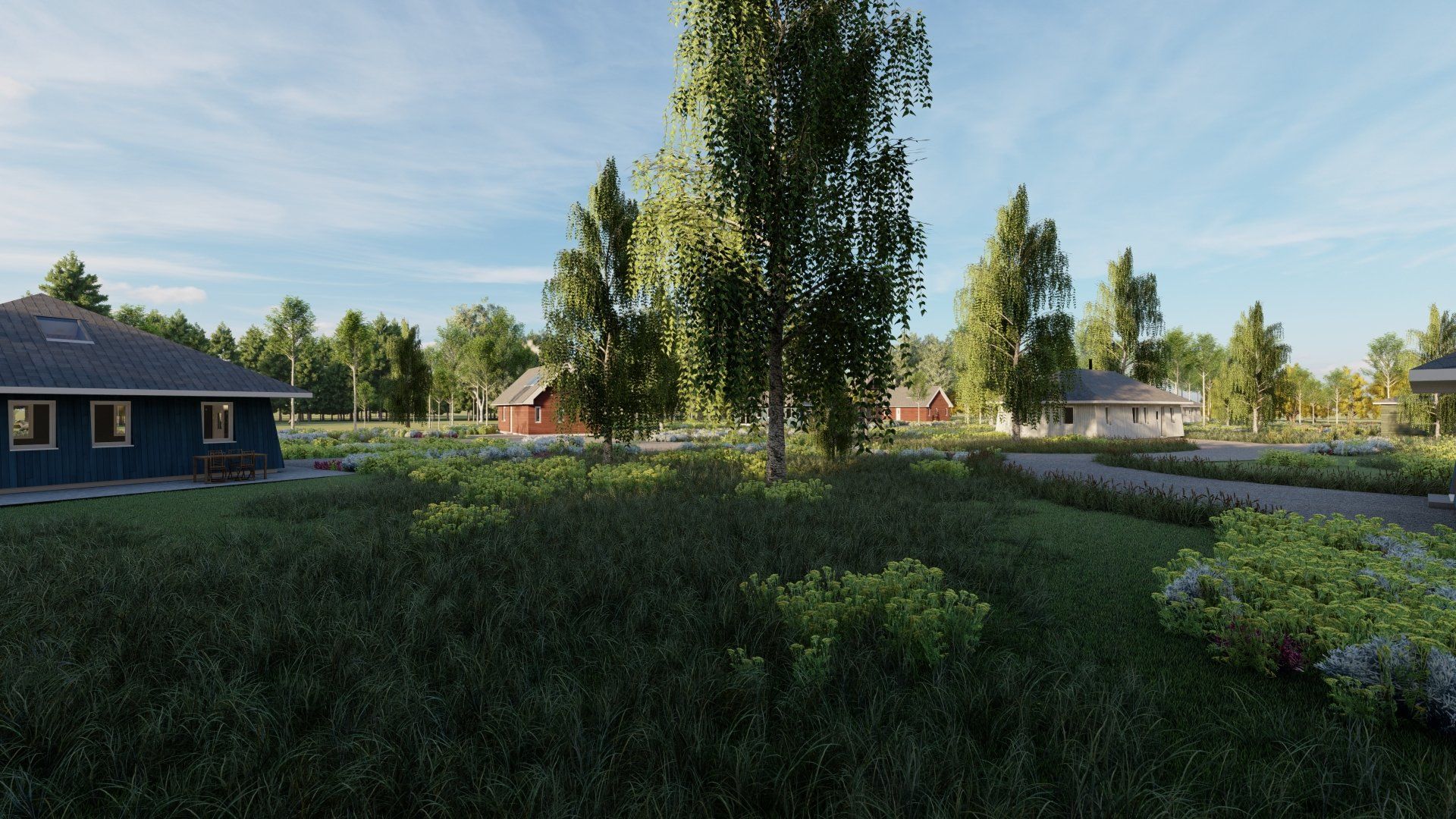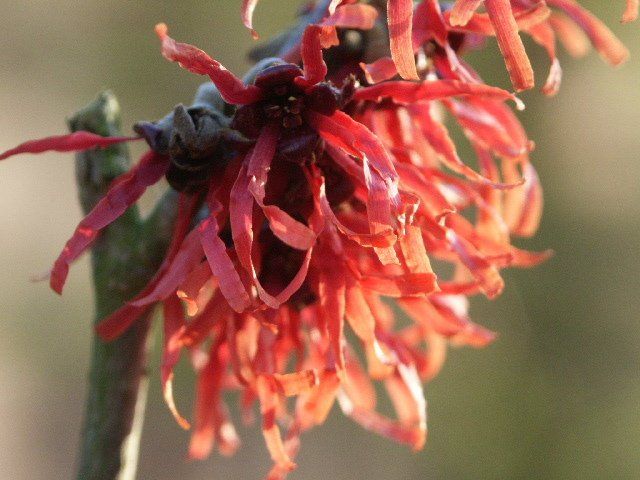Have you sat looking at the bottom portion of your garden as it
disappears under a few inches of water in a downpour, wondering what you can do
to make the best of a bad job? You could either spend money on improving
drainage so that your roses will flourish or bite the bullet & embrace the
best qualities of boggy or saturated ground & plant those species that will
welcome the water lapping around their root bowl. I’ll talk about drainage in
another blog but these are my top plants if you want to go down the floral
root.
If you study marginal planting in nature you will see several landmark species of tree that will flourish in the wettest of soil conditions. Willows (genus - Salix) are the commonest & most atmospheric & they love waterside positions. The best of them include Salix alba var. vitellina 'Britzensis', with lovely winter bark colour & Salix babylonica 'Tortuosa' - the twisted or Dragon's Claw willow. Beware though as willows can be invasive root wise, especially if they are near to drains, & can be prone to branches cracking and falling if positioned in an exposed position. Taxodium distichum, Metasequoia glyptostroboides and Nyssa sylvatica are all noteworthy garden trees for damp spots. Acers are always a good bet in soggy conditions with my favourite being Acer japonicum ‘Vitifoilium’, an autumnal stunner…
For some real class in wet ground you should look no further than the bamboo genus Phyllostachys. This large group of bamboos are not overly invasive if you keep tabs on the new shoots in the spring & cut them back underground if they stray in the wrong direction. A word of warning is that this needs doing with unfailing regularity or they can get beyond control. I would look at root barrier protection to stop unwanted spread without shoot watching. Some species can reach up to 5m in damp sheltered ground, so you should choose carefully. Biggest of all is Phyllostachys aureosuculatus with canes up to 75mm across, definitely one for the bigger garden bamboos. Golden canes are provided by Phyllostachys bambusoides 'Castillonis' or P. vivax aureocallis both of which will grow to 3m+ & will lighten a damp shady corner. The classic black bamboo p. nigra comes on several forms with two of the best being P. nigra f. punctata or the cultivar 'Boryana. Other tall bamboos to look for include (deep breath...) Semiarundinaria fastuosa, Himalayacalamus falconeri & Pseudosasa japonica (those Linnaean scholars do like to give bamboos tongue twisters for names...). A favourite of mine is the Chilean bamboo Chusquea culeou, which forms dense clumps and has fantastic canes. Smaller bamboos that will thrive in these conditions & are worthy of attention are the golden variegated Pleioblastus auricomis & Shibataea kumasasa, which has attractive zebra striped shoots in summer.
On the smaller shrub scene, the dogwoods will grow well, & provide stunning winter colour across a whole portion of the spectrum from yellow to almost purple. The genus is Cornus & the following cultivars will be good value for money. 'Flaviramea' is bright green, 'Siberica' is red, 'Midwinter Fire', orange / yellow, & 'Kessselringii' dark red / purple. Specimens should be stooled (cut to 150mm) in spring to promote better winter colour.
Ferns are a blessing for the damp shady spaces in the garden. The Victorians built special Ferneries that were designed exclusively for this most textural family of plants. Osmunda regalis (the Royal Fern) is by far & away the best fern here & can grow to 1.5m in the optimum conditions. Matteuccia struthiopteris is also known as the Shuttlecock Fern & when planted in a swathe provides a fabulous array of fronds that enhances any planting. The copper shield fern (Dryopteris erythrosora) has fantastic bronze shoots in the early summer whilst the stunningly named Polystichum setiferum ‘Pulcherrimum Bevis’ has equally stunning fronds in the shadiest of spaces.
Big leaves are the staple of the bog garden. Massive & not for the faint hearted is Gunnera manicata. Growing to 3m high with leaves that can grow to 2.5m across you can see that it would swamp the smaller garden but in the more stately acre it is an impressive beast. Darmera peltata has leaves to 500mm across & stunning autumn colour so is worthwhile in a restricted area, unlike Petatsites japonicus which looks similar but is much more invasive, flowers before leafing in the spring & with no autumn highlight. Rheum or ornamental rhubarb is also worth a look.
For flower in boggy conditions your choice is wide & varied & I would recommend the following genus highly:
Primula or primrose has the candelabra flowered bulleyana species producing orange / yellow flowers that are striking in a mass planting, with the Star Trek looking Primula viallii adding the weird & wonderful.
Inulas range from the manageable Inula hookeri to the bigger & more impressive Inula magnifica, but they are all in my top draw.
Irises really take the prize & you can pretty much take your pick from the daintily flowered Iris siberica, the bold flag waving border Irises like 'Kent Pride' through to the magical Iris ensata species.
Astilbes are hand in hand with Irises at the top of the list, Cultivars like 'Granat' & 'Fanal' are tall & red whilst 'Bronze Baby is smaller. Irrlicht' is white & can provide a real focal point.
Finally the Day Lily or Hemerocallis has literally hundreds of cultivars that will all love the damp ground. Take your pick, but I'll name a few for your perusal, 'Red Rum', 'Night Porter', 'Gentle Shepherd', 'Prairie Sunset' & 'Black Magic'.

Recently I was charged with the design and planning of the landscape for a proposed housing scheme situated adjacent to the BSW Timber Sawmill at Boat of Garten in the Cairngorm National Park.
This scheme addressed the concerns in the area about affordable homes within rural areas of Scotland. It provides for up to 12 homes situated in what is currently mainly sheep pasture. Preliminary feedback from the planning authority asked for an innovative landscape scheme to accompany the proposal, so I found myself on my way to the Cairngorms and facing a significant design challenge.
Boat of Garten is situated close to Aviemore at the northern end of the Cairngorm range alongside the River Spey. Arriving at both an unmistakably rural and breathtakingly beautiful area it was obvious to me from the start that light touch design would be required for any scheme to sit perfectly within the proposed site.
The house design, by R J Architects of Glasgow, allows for the houses to be made from sustainable timber sources to be supplied by BSW Timber. It is partially on the site of a domestic residence owned by the sawmill with the majority of the area located on an adjacent sheep field which is part of a local landowner’s estate.
A native woodland of Aspen and Birch dominates one boundary and the planning authorities had noted that studies had shown that the fauna present included the rare saproxylic (living on dead and decaying timber) Aspen Hoverfly and Dark Bordered Beauty moth, which require both a diverse population of Aspen from seedlings through to the older and decayed specimens to thrive. I was keen to preserve both the species and enhance their habitats by enlarging the Aspen population and preserving the existing flora and standing dead trees within the existing woodland. A rookery within the woodland will also remain undisturbed by the creation of the housing development.
It always appears to me that the impression given to both planners and public is that housing development is an anathema to native flora and fauna, but in this proposed scheme these elements are at the heart of the landscape design which is an integral part of the overall vision.
Recent media coverage of apparently ‘uncaring’ developers affecting habitats has highlighted the cause of wildlife in the public consciousness, however, I hope that this design can show that rural development is not just a case of building suburban cul-de-sacs in rural environments but is an opportunity to enhance and embrace the environment for both wildlife and residents alike.
From a services point of view the scheme looks to utilise rain gardens throughout the scheme to filter surface water directly into the ground through natural percolation rather than deploy an extensive drainage system. Additionally, all road surfaces, apart from the adopted entrance road, are permeable to allow water ingress and all rainwater from the houses are channelled into the swales. Unlike most developments, the importance of the soil integrity will mean that particular attention will be focussed on alleviating any potential soil compaction by zoning the construction so that only the build plots will be used for on-site storage.
Tree planting will be used to create a setting where the houses fit within the current woodland by planting saplings and semi mature trees amongst the houses in naturally random spacings. Any further planting of shrubs would be locally sourced to maintain the plant provenance along the strath of the Spey. In addition to this, parts of the scheme would be set aside to wildflower meadows native to the area and so increase biodiversity.
It is envisaged that the garden spaces for each home will be bounded by native hedges to minimise sharp angles. Native shrubs will create understory planting around the trees and the intention is that maintenance in shared areas will be minimised and the shared areas will not appear over groomed.
We should encourage children to engage with outdoor play and to be outside where possible. Current thinking is that the forest canopy and being in a forest environment is conducive to good mental health. There are many factors at play here but the book ‘The Nature Fix’ by Florence Williams should be required reading for anyone planning outside space as it describes various gains for mental well-being by being close to nature and it certainly informed my work on this project. With this in mind, the inclusion of an area where natural play can be encouraged, common to the development is a lovely thing to be able to include within the design. In addition to the existing woods, shaping the land and including boulders and round timber posts where inventive play can happen will create spaces that will help forge a close knit community. A natural path network will ensure access to school, local work at the mill or in Boat of Garten itself and to wild areas further afield by joining onto the local core path network.
The premise of this design is the enhancement of the current landscape, creating a feeling of houses being carefully placed amongst trees as opposed houses being imposed on a landscape and all which that implies.
It is not often that you have the opportunity to embrace such a concept and I hope that it will be recognised as something that would become one solution to creating rural housing which prevents the exodus towards the cities and protects countryside communities.
A fly through video of the scheme can be seen on the link below

Sometimes it feels like you need a small miracle to give your garden a facelift during the winter, but it is the same process you would use for summer borders which will give you a winter garden to be proud of. Careful thought and judicious planning are the key. We can all bung in a clump of snowdrops or crocus, it doesn't take much imagination to do that, but the same principles apply during the winter as at any other time. Careful use of colour and structure and a quick thought about succession will give you a thread of glorious colours right through to spring.
Quality early flower starts in January with the spidery flowers of Witchhazel (Hamemelis x intermedia). This small woodland tree has flowers from bright yellow (for the species H. mollis, which is also heavily scented) through a warm orange ('Jelena') to a deep red ('Diane'). At a bleak time of the year the sparkling colour of these flowers give a gentle reminder of the sumptuous colour to come in the summer.
Bark or stem colour is always a fantastic standby for striking colour throughout the winter months. Best of all (and most reliable if they are managed properly are the Cornus family (commonly known as dogwoods, particularly alba or sanguinea) or the Salix (willows to most of you). If coppiced or stooled (cut to within 10cm of ground level) in early April and well fed, the growth throughout the year achieves intense colours. Red is best in Cornus alba 'Siberica', orange/yellow in Cornus sanguinea 'Midwinter Fire' or Salix alba var. Britzensis, lime green in Cornus sanguinea 'Flaviramea', and dark red/purple in Cornus alba 'Kesselringii'. This process shortens the overall life of these plants, but as Salix can all be regrown from 'whips' (what you cut off in April) or by layering Cornus, then you can regenerate as they die off. You still would not normally worry about this for 15 to 20 years.
We are at the beginning of the best time of year for Hellebores. These underestimated plants have gained a fashionable following in recent years with all manner of crosses, sports, and new varieties flowing into good plant centres. Helleborus x hybridus has frilled, and double flowered varieties being introduced all the time, and they are well worth keeping an eye on. They are good reliable flowerers with the best displays achieved by having all their leaves removed as the buds start to peep through. Keep an eye out for Helleborus niger, especially the variety 'Potter's Wheel', the most excellent Christmas Rose. Others worthy of note are Helleborus argutifolius, Helleborus x sternii, Helleborus foetidus, and Helleborus viridis. If you already have a few… watch out for seedlings as they spread well by seed.
Most gardeners rely on bulbs for this season and carrying on into spring and nothing wrong with that, but it is worth digging a little deeper (so to speak) to find bulbs that have that extra something. Snowdrops (Galanthus) are always a welcome sight in late winter but watch for the varieties 'Flore Pleno', 'Atkinsii' and 'Straffen'. In the world of the Narcissus have a good look at the cyclamineus varieties, as they are always good value. Notable are 'Jack Snipe' and 'Jetfire'. Also worth a punt are Narcissus jonquilla as it has beautiful scent and Narcissus bulbacodium for naturalising in flower meadows. With bulbs it is always worth checking the on line companies that can be found and noting you do get what you pay for. The fill-a-bag displays in garden centres are not usually worth chancing as they can be overstocked with the cheaper, less impressive varieties. I find Gee-Tee bulbs a good supplier. You can find them at https://www.gee-tee.co.uk/
One impressive winter shrub that hides its' light under a bushel during the summer is Garrya elliptica 'James Roof'. The graceful 'catkins' seen in January against the dark, shiny foliage are always a delight and a marked lesson from the school of 'what you see isn't always what you get' school of plant buying. Those of you who only buy plants in the summer generally miss this hidden gem that will reliably perform in freezing north facing microclimates and in poor soils.
A commonly seen shrub, which some people refer to as 'winter lilac', is Viburnum tinus. Evergreen, flowering for most of the year, attractive (though inedible) fruits, this does it all. Not a fashionable plant but when has that ever stopped something being worthwhile. Either as a specimen shrub or even as a hedge this is not a plant to overlook.
Daphnes are definitely a 'must have' as far as winter is concerned, for scent, Daphne odora, or for flower Daphne bholua 'Ghurka'. Other Daphnes have good qualities but these are the pick for me.
One more shrub before I leave you, Viburnum farreri, pink January flowers with a classic umbrella shape. Not for the small garden but a great stalwart in the large mixed border.
As ever, look around and see what other people have in their gardens that look good, you could call it copying but I prefer to call it inspiration.

